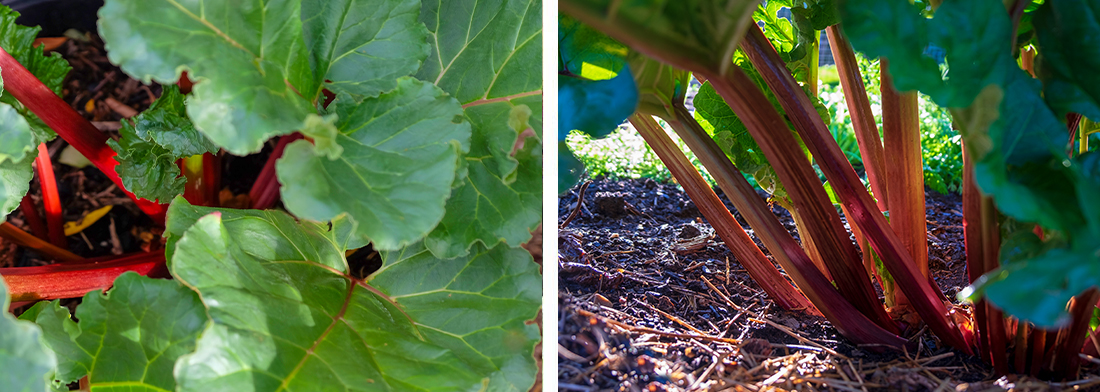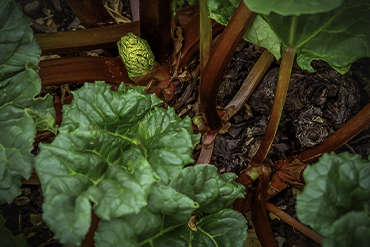
Rhubarb Renaissance: A Curious plant
- Roots
Originally, rhubarb (Rheum palmatumn) was valued for its medicinal prowess. Native to the wintry steppes of Central Asia, Himalayas and Mongolia, the Chinese cultivated and harvested the big yellow root (da haung) for it strong purgative effect and as a cure-all for a raft of other afflictions. First documented in the Shen Nong Ben Cao Jung, the earliest book on materia medica, the Chinese have been conversant with its medical efficacy since 2700 BC! Traded exclusively along the ancient silk road routes, its therapeutic properties were soon held in high regard and demand. By the 10th century it became a major export and spread to India, Russia, Europe and North America.
In Europe it cost more than opium and in France (in 1542) it sold for ten times the price of cinnamon and four times that of saffron. To capitalise on its value and monopolise the rhubarb trade out of China, in 1728 Russia established the Rhubarb Commission under the Chinese - Russian Kyakhta Trade Treaty . The only way rhubarb could leave China was via the Russian Rhubarb Commission. This oligopoly lasted 130 plus years.
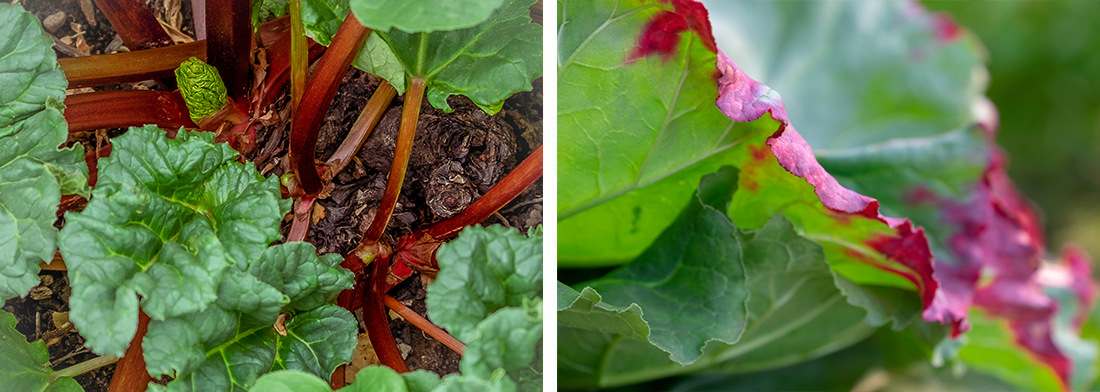
 Today, we value a different variety (Rheum x hydrium) for its culinary contributions and the unique tart puckery characteristics of its leggy stems. Its consumption as a food lagged until the 17th century when Europeans started to selectively hybridise red and green varieties. By the 18th century, it was used so extensively throughout England and America, particularly as an inexpensive filler, that colloquially it was known as the “pie plant’.
Today, we value a different variety (Rheum x hydrium) for its culinary contributions and the unique tart puckery characteristics of its leggy stems. Its consumption as a food lagged until the 17th century when Europeans started to selectively hybridise red and green varieties. By the 18th century, it was used so extensively throughout England and America, particularly as an inexpensive filler, that colloquially it was known as the “pie plant’.
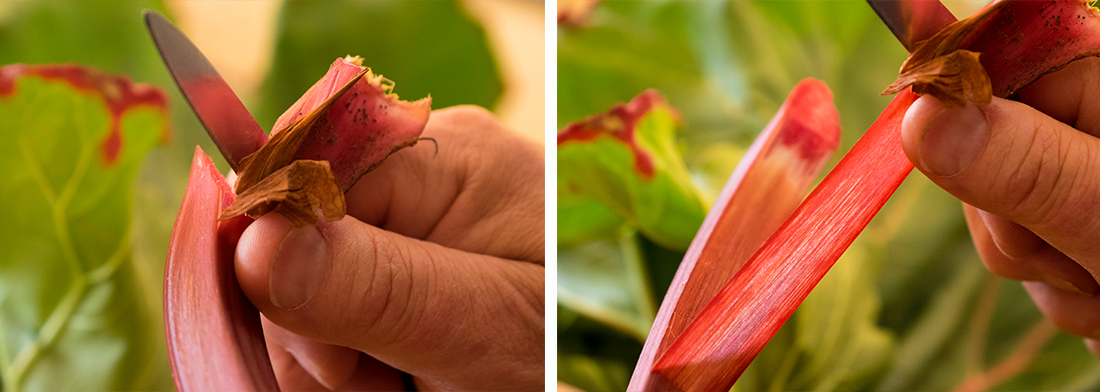 Arriving on Australian shores with the first free settlers from England, we adopted its usage as a fruit. However, traditional Middle Eastern recipes use its tartness and fruit flavour to balance out long simmered dishes such as Khoresh Rivas (Persian Rhubarb Stew). It is, after all botanically classified as a vegetable and not a fruit. Having said that though, in 1947 a New York Court declared rhubarb a fruit because it was most often used as one.
Arriving on Australian shores with the first free settlers from England, we adopted its usage as a fruit. However, traditional Middle Eastern recipes use its tartness and fruit flavour to balance out long simmered dishes such as Khoresh Rivas (Persian Rhubarb Stew). It is, after all botanically classified as a vegetable and not a fruit. Having said that though, in 1947 a New York Court declared rhubarb a fruit because it was most often used as one.
Botanically it remains a vegetable and New York is currently the only place in the world where it's declared a fruit. From spring through to autumn, the continuous harvest can be transformed into jams, chutney’s and syrups. As the days shorten and comfort food calls, rhubarb crumble, pie, tarts and muffins, sooth the soul and revive our spirits.
RHUBARB : A CURIOUS PLANT INDEED
Taken out of its ancestral home thousands of years ago it has travelled far and wide across savannas, desserts and seas to serve mankind. Once valued for its roots to cure our ailments, we now have regard for its stems as they proffer culinary delight. But beware, poison is concealed in the leaves. High concentrations of oxalic acid reside in those oversized vivid green leaves and awaits unwitting adventurers and creatures. Despite its popularity pre WWII, it fell from grace in the post war years as it was seen as a soggy and unfashionable food.
Until recently that is: now there’s a rhubarb renaissance. It’s no longer stewed to a sweet stringy mess, it’s lovingly baked to concentrate flavours and retain its shape and its teamed with other fruits and flavourings to make new wave modernist concoctions such as rhubarb and vanilla lemonade, rhubarb kombucha, pink rhubarb gin and glamorous cocktails and different jam and chutney combinations - Rhubarb and Raspberry Jam, Rhubarb and Orange Jam and Rhubarb and Mandarin Chutney.
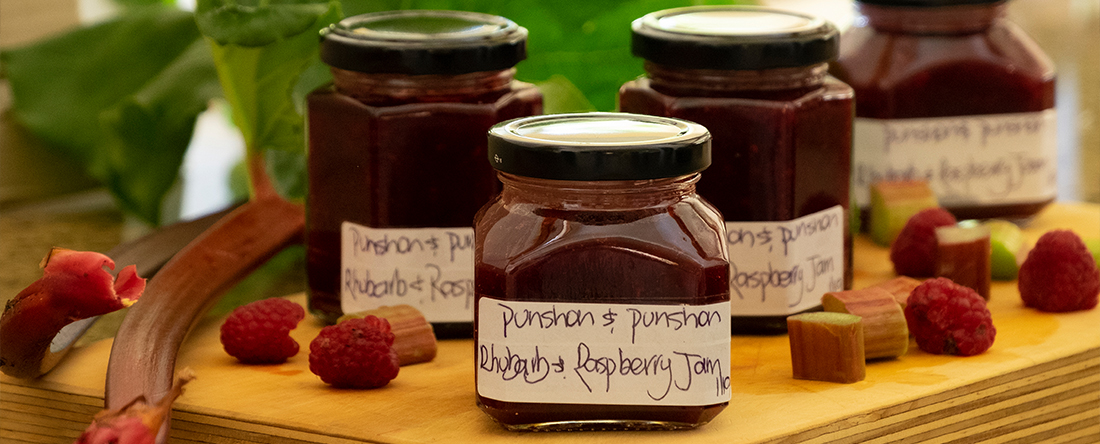
The most revered forced rhubarb is grown in West York’s’ Protected Designation of Origin Rhubarb Triangle. Just nine square miles between Leeds, Wakefield and Bradford. Nurtured completely in the dark and harvested by torch or candle light this sweet delicate rhubarb is sold as a premium product. A similar protected designated origin status does not exist in Australia, but just ten years after planting the first crowns, Jerrod Nichols, Scottsdale (Tasmania) farmer is Australia’s largest rhubarb producer.
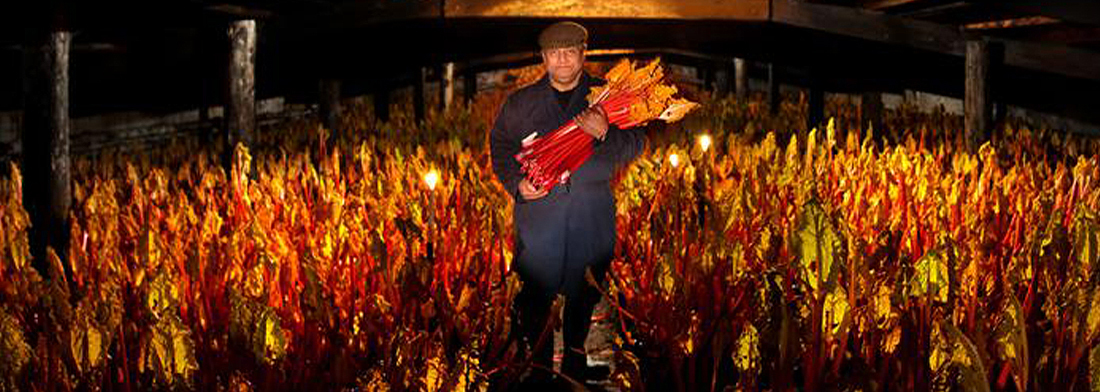 Yorkshire rhubarb, grown in the dark, harvested by candle light
Yorkshire rhubarb, grown in the dark, harvested by candle light
Its resilience has stood the test of time, adapting to the socio-economic winds of time and place. No longer relegated to far corners, it now stands loud and proud in our kitchen gardens, farmers markets and supermarkets. We now bake, steam, poach, simmer and distil our rhubarb to make culinary creations, whimsical brews and spirited elixirs. And who knows, further medical research into rhubarb extract may validate our ancient medico’s wisdom and provide nature based solutions to our troublesome ailments.
